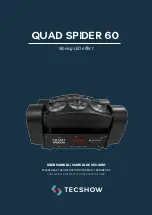
DMTA-10009-01EN [U8778346], Rev. D, November 2016
Chapter 5
74
consistent. In order to accomplish consistent measurements, use a couplant of
reasonably low viscosity; employ only enough couplant to achieve a reasonable
reading; and apply the transducer with uniform pressure. Practice will show the
degree of moderate to firm pressure that produces repeatable readings. In
general, smaller diameter transducers require less coupling force to squeeze out
the excess couplant than larger diameter transducers. In all modes, tilting the
transducer distorts echoes and causes inaccurate readings, as noted below.
Curvature of the test piece
A related issue to this section involves the alignment of the transducer with
respect to the test piece. When measuring on curved surfaces, it is important that
the transducer be placed approximately on the centerline of the part and held as
steadily to the surface as possible. In some cases, a spring-loaded V-block holder
may be helpful for maintaining this alignment. In general, as the radius of
curvature decreases, the size of the transducer should be reduced, and the more
critical transducer alignment will become. For very small radii, an immersion
approach is necessary. In some cases it may be useful to observe the waveform
display as an aid in maintaining optimum alignment. Practice the best way to
hold a transducer with the aid of a waveform display. On curved surfaces, it is
important to use only enough couplant to obtain a reading. Excess couplant forms
a fillet between the transducer and the test surface where sound reverberates and
possibly creates spurious signals that may trigger false readings.
Taper or eccentricity
If the contact surface or back surface of the test piece is tapered or eccentric with
respect to the other, the return echo is distorted due to the variation in sound path
across the width of the beam. The accuracy of the measurement is reduced. In
severe cases, no measurement is possible.
Acoustic properties of the test material
There are several conditions found in certain engineering materials that can
potentially limit the accuracy and range of ultrasonic thickness measurements:
— Sound scattering:
In materials such as cast stainless steel, cast iron, fiberglass, and composites,
sound energy scatters from individual crystallites in the casting or
boundaries of dissimilar materials within the fiberglass or composite.
Porosity in any material can have the same effect. Adjust the instrument
sensitivity to prevent detection of these spurious scatter echoes. This
compensation can in turn limit the ability to discriminate a valid return echo
from the back wall of the material, thereby restricting measurement range.
— Sound attenuation or absorption:
In many organic materials such as low density plastics and rubbers, sound
Summary of Contents for 38DL PLUS
Page 6: ...DMTA 10009 01EN U8778346 Rev D November 2016 Table of Contents vi...
Page 8: ...DMTA 10009 01EN U8778346 Rev D November 2016 List of Abbreviations viii...
Page 24: ...DMTA 10009 01EN U8778346 Rev D November 2016 Important Information Please Read Before Use 16...
Page 26: ...DMTA 10009 01EN U8778346 Rev D November 2016 Introduction 18...
Page 46: ...DMTA 10009 01EN U8778346 Rev D November 2016 Chapter 2 38...
Page 56: ...DMTA 10009 01EN U8778346 Rev D November 2016 Chapter 3 48...
Page 102: ...DMTA 10009 01EN U8778346 Rev D November 2016 Appendix 94...
Page 106: ...DMTA 10009 01EN U8778346 Rev D November 2016 List of Tables 98...
















































